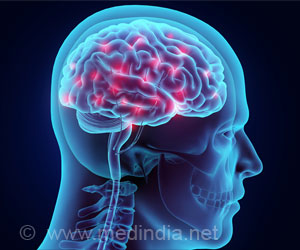Why do babies make random movements? As the nervous system begins to mature, these reflexes give way to purposeful behaviors.

‘Better understanding of how our sensorimotor system develops could help us gain insight into the origin of human movement as well as earlier diagnoses of developmental disorders.’





Researchers found patterns of muscle interaction developing based on the babies’ random exploratory behavior, that would later enable them to perform sequential movements as infants.Right from birth — and even in the womb — babies start to kick, wiggle and move seemingly without aim or external stimulation. These are called ‘spontaneous movements’.
Currently, there is limited knowledge about how newborns and infants learn to move their bodies. Previous research into sensorimotor development has focused on kinematic properties, and muscle activities that cause movement in a joint or a part of the body.
However, the study focused on muscle activity and sensory input signals for the whole body. By combining a musculoskeletal model and neuroscientific method, they found that spontaneous movements, which seem to have no explicit task or purpose, contribute to coordinated sensorimotor development.
Newborns Acquiring Sensorimotor Modules Through Spontaneous Body Movements
First, the team recorded the joint movements of 12 healthy newborns (less than 10 days old) and 10 young infants (about 3 months old) using motion capture technology.Next, they estimated the babies’ muscle activity and sensory input signals with the aid of a whole-body, infant-scale musculoskeletal computer model which they had created. Finally, they used computer algorithms to analyze the spatiotemporal (both space and time) features of the interaction between the input signals and muscle activity.
Advertisement
However, the results implied that infants develop their sensorimotor system based on explorational behavior or curiosity, so they are not just repeating the same action but a variety of actions. In addition to this, new findings provide a conceptual linkage between early spontaneous movements and spontaneous neuronal activity.
Even though sensorimotor wandering, the babies showed an increase in coordinated whole-body movements and anticipatory movements. The movements performed by the infant group showed more common patterns and sequential movements, compared to the random movements of the newborn group.
Next, researchers want to look at how sensorimotor wandering affects later development, such as walking and reaching, along with more complex behaviors and higher cognitive functions.
Source-Eurekalert











